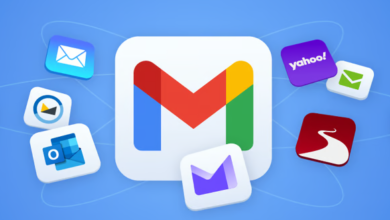Elevating Occupational Health: Transforming Noise Monitoring and Audiometry Testing in Australia

As Australia reshapes its workplaces, safety seems to be having a new focus. Companies have ditched static data and periodic checks for advanced noise monitoring systems and continuous audiometry testing. This approach goes beyond regulatory compliance and enables the proactive data-driven management of health. Now, businesses that compete in the market are using real-time noise monitoring paired with audiometry testing as a strategic catalyst for operational excellence and employee health optimization.
Harnessing Safety With Continuous Data Capturing
From mining and manufacturing to construction and logistics, the Australian industry was relying on periodic noise surveys. The advancement of technology gave organizations the ability to adopt monitoring systems that capture noise data in real time. The use of sophisticated sensors and IoT technology allows these systems to record ambient noise levels all day. The constant data flow empowers safety managers to address risks in real time.
This strategy enables real-time monitoring of workplace noise levels, instantly flagging deviations from safe thresholds. Such responsiveness helps mitigate hearing damage while control mechanisms can be implemented immediately. In a country like Australia, where operational contexts range from busy metropolitan hubs to remote outback facilities, continuous noise monitoring is crucial for ensuring safety.
Associated with Comprehensive Audiometry Testing for an All-Encompassing Hearing Heath Policy
While critical, passive noise monitoring serves as one of the many essential components required in a workplace environment. Australian employers are now augmenting their real-time noise monitoring to provide constant audiometry testing to ensure safeguarding employees’ hearing health. Rather than waiting for the annual check-up, companies are taking a proactive stance by linking real-time noise monitoring to the employees’ hearing capabilities to monitor their health.
This integration facilitates the identification of even the most subtle changes in hearing ability long before they escalate into critical issues. By utilizing longitudinal audiometric test data, safety experts are able to optimize the interventions for each employee’s specific situation. These interventions could involve changes in the application of personal protective equipment (PPE), work routine changes, or shifts realignment to minimize exposure. Such strategies not only maintain preservation of hearing health over an extended period, but also shift audiometry testing from a preemptive, annual examination to an active aspect of holistic care monitoring.
Exploiting Digital Tools and Predictive Analytics
Digital technologies and predictive analytics stand out as the foremost drivers of change in the area. Australian businesses are adopting cloud-based systems that add text-commented values to graphs that display the sound level monitoring data alongside the results of audiometric tests. Managers are equipped with interactive dashboards depicting real-time images of workplace noise, levels of hearing impairment, and the degree of hearing health of employees.
Taking things a step further, predictive analytics forecast potential risks using a combination of historical and real-time data. For example, some algorithms can detect persisting noise surges and estimate their long-term consequences on an employee’s hearing. This allows companies to proactively change operations in advance by adjusting equipment settings, altering workflow designs, or augmenting hearing protection to avert any negative impacts to hearing. With digital systems available, risk mitigation can be an ongoing, rather than episodic, practice that drives efficiency and sustained compliance.
Encouraging involvement from all levels within an organisation by creating a culture of continuous incremental improvements is pivotal in fostering reliability.
The sophisticated noise monitoring coupled with periodic audiometry testing does not only seek to improve technology, but rather marks a shift in practices in Australian workplaces. Through providing employees with sufficient listening to noise and hearing health data, companies are enabling all employees to take part in managing safety, actively. Participation rates surely rise when employees realize the impact of their workplace on their health.
Regular safety briefings alongside interactive dashboards promote collective conversations on angling safety and workplace conditions, creating proactivity at every level from frontline workers to senior management. Because of the safety culture, employees embrace continuous improvement, further optimizing company processes by early issue reporting and setting high personal safety standard ownerships. This practice in Australia’s highly competitive market, forms a blend of strengthened safety culture, shared accountability, operational excellence, and adaptive, resilient workforce.
A Future Workspace
Having continuous Australia wide noise monitoring and continuous audiometry testing, gives companies a bespoke strategy edge. With the rapid evolution of the country’s use and need for regulations, these businesses become forward-thinking aids. Organizations invest in these modern solutions that need strong compliance bounds, turning the focus to anti-future proof gaps, and anticipate foreseen regulations, technological advancements, and health risks with confidence.
For seasoned Australian enterprises following Canadian counterparts in pursuit of operational gap-free zones, workforce safety dynamically demands a periodic approach. Steadfast change driven by complex Australian regulations means fostering for international competitiveness takes advanced risk management proves to be the linchpin for resilient growth.
Conclusion
The combination of continuous noise monitoring and regular audiometry testing is streamlining workplace safety in Australia. Organizations are moving beyond traditional safety measures to more predictive risk management using real-time data, predictive analytics, and a culture of continuous improvement. This novel method not only boosts employees’ hearing protection but also increases efficiency and creates a sustainable workplace ready for the future, which helps Australian companies maintain their edge in a fast-changing industrial world.





